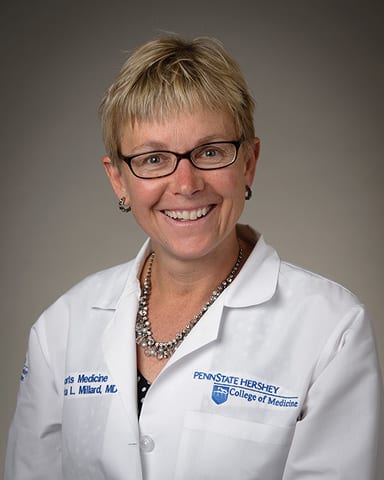Osteoporosis literally means “porous bone.” People with osteoporosis have fragile bones that are more likely to break, due to lost density or mass, often without them even realizing it is happening. Because of this, osteoporosis is often called a silent disease. Many times, the first sign of osteoporosis is a broken bone, most commonly in the wrist, spine, or hip, often with little or no trauma.
Fractures from osteoporosis are a major health concern for the 54 million Americans with low bone mass. Approximately 2 million Americans each year suffer fractures related to osteoporosis. Studies suggest that one in two women and one in four men age 50 and older will break a bone due to osteoporosis during their lifetimes. In fact, a woman’s lifetime risk for a hip fracture equals her combined risk of breast, uterine, and ovarian cancers. A man age 50 or older is more likely to have an osteoporosis-associated fracture than he is to get prostate cancer.
The most common fractures related to osteoporosis are serious injuries. Spine or vertebral fractures are painful and heal slowly, causing a permanent loss of height and sometimes resulting in the upper back curving forward. Hip fractures require surgery and hospitalization — as many as 40 percent of people who have broken a hip are unable to walk independently one year later.
Understand the risk factors
It is important to know if you are at-risk for osteoporosis and to discuss with your health-care provider a plan for protecting your bones. Risk factors include:
- Age 50 and older.
- Family history of osteoporosis or hip fracture.
- Low body weight.
- Female, especially post-menopausal.
Risk factors that can be controlled by modifying your lifestyle include:
- Smoking.
- Using excess alcohol.
- Having a diet deficient in calcium and vitamin D.
- Being physically inactive.
In addition, medications, such as steroids and those used to treat certain chronic conditions, may increase your susceptibility to osteoporosis.
If you and your health-care provider determine that you are at-risk, a bone-density test called a DEXA scan may be recommended. The DEXA is a quick, painless X-ray using very little radiation that helps predict the risk of facture and need for treatment.
Improve your bone health
The good news is that 10 to 50 percent of bone structure can be influenced by our lifestyle. It is never too early or too late to integrate changes in your life to improve bone health. Childhood and young adulthood are the bone-building years, but it is important to promote bone health at all ages.
Getting enough calcium and vitamin D is essential to building strong, dense bones, and food is the best source of calcium. Dairy products such as milk, yogurt, and cheese are high in calcium, while foods such as orange juice, cereals, and soy milk may be supplemented with calcium. Check the “nutrition facts panel” on the product to determine the amount of calcium per serving.
Women over age 50 and men over age 70 require 1,200 milligrams of calcium per day, while most other adults require 1,000 milligrams daily. If you are unable to obtain the recommended daily amount of calcium from foods in your diet, you may need to take a calcium supplement to make up the difference. There is no benefit from taking more calcium than you need, and it may even have some risks.
Unlike calcium, it is very difficult to get the amount of recommended vitamin D you need from food alone. And although vitamin D can be produced in our skin by exposure to sunlight, production is nearly absent during the winter months. In summer months, use of sunscreen may block up to 95 percent of our vitamin D production. Adults under age 50 require 400 to 800 IU of vitamin D daily, and those over 50 require 800 to 1,000 IU daily. This may be taken as a stand-alone vitamin D supplement or as part of a multivitamin or calcium supplement.
Two types of exercises are important for building and maintaining bone density: weight-bearing and muscle strengthening. Weight-bearing exercise can be high impact, such as running, or low impact, such as walking or using an elliptical machine. Muscle-strengthening exercise uses weights, resistance bands, or body weight against gravity. Those with poor balance or a history of falls may want to consider balance exercises, such as tai chi, to increase muscle strength and decrease the risk of falls. Consult your health-care provider to determine what exercise regimen is right for you.
If you already have osteoporosis, your health-care provider may recommend prescription bone-building medications to improve your bone density. Increasing bone mass by just 10 percent can decrease fracture risk by up to 50 percent, so it is never too late to protect yourself.
Osteoporosis is common and potentially serious, and it can sneak up on you. Making lifestyle changes, taking in adequate calcium and vitamin D, and performing bone-building exercises regularly can protect you from silent bone loss. Now is always the right time in your life to build and maintain healthy bones.



